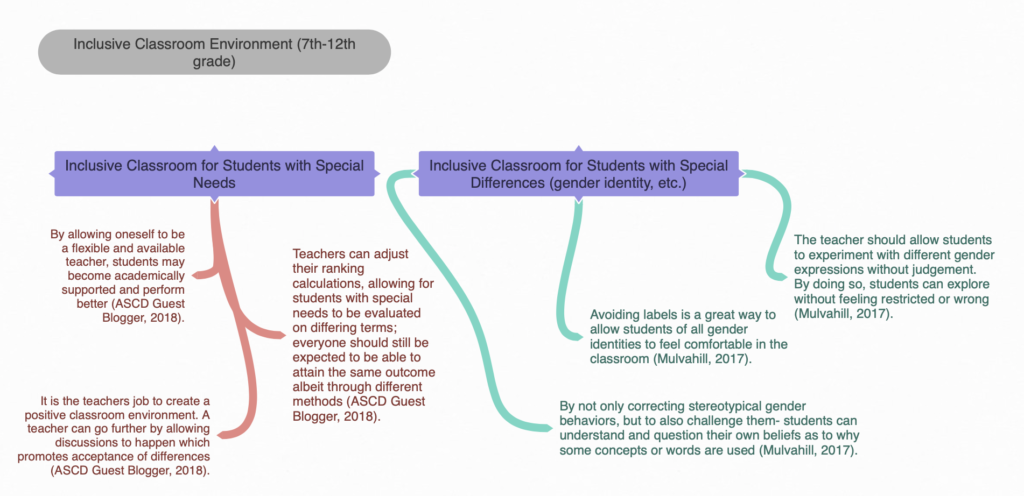How can we Increase Inclusivity in the Classroom?
There are two ways that a teacher can promote inclusivity in the classroom: by creating an environment that allows students with special needs to become accommodated as well as accepted, and by fostering an environment that is non-judgmental towards students with nonconventional gender expressions. Both of these practices are reliant on the teacher to promote the idea that the classroom is a safe space in which students are allowed to be themselves.
Misconceptions That Harm The Perception of “Lower-Ability” Students
A common misconception that some teachers experience is the idea that special education students need to be put in a separate class. Not only is this way of thought creating the dialogue which states that general education students are “normal” while special education students are “different”, but it also allows students to view special education students as “others”. One of the main reasons why this is detrimental for the special needs community is because it can impact their future employment opportunities when higher-ups refuse to view them as capable and helpful individuals. General education students may grow up never truly seeing the capabilities of a special needs student, thus refusing them opportunities to further grow.
How Can We Improve?
The three tips that can benefit all parties involved include: adjusting ranking calculations, fostering a flexible environment, and creating discussions that aim to promote a community that demonstrates acceptance and understanding. Let’s get into the first term which was to, “adjust ranking calculations” this refers to the means by which the students are tested. By adjusting the ways that teachers grade students’ work- we can begin to test for more meaningful material. One of the ways that teachers can provide differentiated exams is to design them in ways that have more to do with the application rather than memorization. That being said, if a teacher must test on a topic that requires memorization, the teacher should consider providing a different means to the assessment. This concept of creating differentiated assessments goes hand-in-hand with facilitating a flexible environment.
Lastly, by creating discussions that are centered around promoting further understanding of those students with special needs and the wrongdoings that history has against them- students can become empathetic and critically aware individuals.
Inclusivity is not only about including students with special needs into the fray. In order to fully provide a positive learning environment for all parties involved teachers should not only allow all forms of gender expression into the classroom but accept and discuss any misconceptions. Mulvahill (2017) writes a few tips on creating a gender-inclusive classroom, some of which include: allowing students to express their gender identity in whichever ways they want without judgment, avoiding labels or referring to students in boy vs. girl manners, and finally by not only correcting stereotyped beliefs but to also challenge them. Many teachers believe that they have no place in the gender expression argument, when in reality they are one of the vanguards to what they allow, see, and hear.
The Plea for Accommodations
In order to create a classroom that not only promotes a positive learning environment for all but also allows conversations to exist which challenge conventional diversity and inclusion practices- the teacher must be an educated and sharp individual. Some students may have a hard time accepting that one of their peers that has special needs is allowed to take a test through other means. However, what needs to be understood is that these accommodations are helpful for the entire classroom and the futures of all students involved. There needs to be a level of maturity that does not allow bullying, harassment, or any number of negative happenings. The benefits that come out of fostering a classroom environment that cares about all students and many different cultures/perspectives reach far beyond the classroom.
Mulvahill, E. (2017, June). 7 Tips for Creating a More Gender-Inclusive Classroom. Retrieved April, 2021, from https://www.weareteachers.com/gender-inclusive-classroom/
